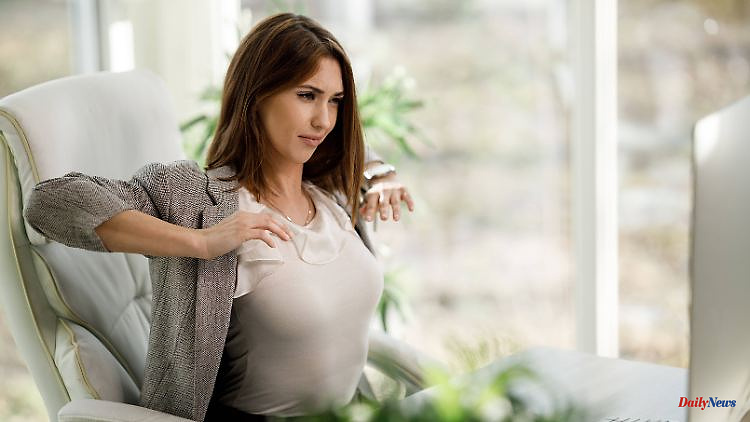If you sit at a desk or in front of a screen for hours every day, you should make sure you have the right posture. An expert reveals exactly what it looks like.
From school to retirement: many people spend half their lives sitting at their desks - and mostly in the wrong posture. "Tense neck and shoulders, but also arthrosis, lumbago and herniated discs are often the result of prolonged sitting, forced posture and permanent immobility," warns Dr. Martin Rinio, Medical Director of the Gundelfingen Joint Clinic.
According to Rinio, the statistics show that the permanent comfort makes it difficult for the back and joints in the long run: At least every second sick leave is due to the spine. Because: what benefits the fat deposits literally atrophies the back and abdominal muscles. "In addition to heart disease, persistent back pain is the most common reason for disability and early retirement," says the specialist in orthopaedics, surgery and trauma surgery.
Sitting for a long time does not inevitably lead to back pain. "If that were the case, everyone who works in an office would have serious back problems," says Dr. Rino to consider. "It is actually true that sitting for hours can lead to back pain, especially if there is a lack of balance and movement," emphasizes the specialist. It doesn't always have to be power training: "Even a few simple fitness exercises in between can make a difference."
Regularly rely on simple fitness exercises
Regular exercise is important - especially on long office days. Uncomplicated fitness exercises such as these are well suited for this: "Stand with your feet apart and your feet parallel and let your arms dangle downwards," says the specialist. "Now swing this on your shoulders from front to back. Bend your knees lightly and relaxed with each swing - if possible, at least twenty times." This lubricates the joints and activates the metabolism.
The "apple-picking exercise" is also simple but efficient. You don't even have to leave your desk to do this: simply alternately stretch your left and right arm up as far as possible. "20 or 30 seconds are enough to stretch the spine in a beneficial way and relax the muscles of the neck and back," emphasizes the orthopaedist.
As a little fitness break in between, we also recommend short "walks" through the office from time to time. These tours are just as beneficial for the back and circulation as spending 15 minutes standing after every hour of sitting.
Change the sitting position
An orthopedic "mortal sin" is staying in the same sitting position for hours, according to Rinio. "This puts more strain on the spine in the long run than when we lounge comfortably." Back and joints need variety: "Whether in the office chair or on the sofa: it's good to switch between an upright, forward-leaning and reclined posture as often as possible," advises the orthopaedist. Shift your weight from one buttock to the other. Phone calls or meetings while standing also promote back health and also protect against cartilage damage in the knee.
Avoid humps
You should definitely avoid hunching over your desk with your head bent forward. Because "due to the unnatural curvature of the spine, intervertebral discs and joints are strained," Rinio explains. Sitting with crossed legs is anything but back-friendly. "This position impedes blood flow to the legs and causes ligaments and nerves to be pinched."
The right office chair
The basis for a back-friendly sitting posture at the workplace is an ergonomically designed office chair. This should have height-adjustable, rounded-off seats and backrests with variable contact pressure. The expert tip: "Take your time with the handling and familiarize yourself with its structure and function down to the last detail. This way you can find the most comfortable and individually best seating position."
Seat balls and footstools protect the spine
Sitting balls are less comfortable, but definitely back-friendly. Orthopaedists recommend sitting on it for at least ten minutes several times a day. "The balancing movements activate the intrinsic back muscles," emphasizes Rinio. If there is no ball, a balance cushion placed on the chair will do. "The muscles are constantly challenged by small compensatory movements," says the expert. "This develops the self-healing powers of the spine." A footstool can also be helpful: It is best to alternately place your feet on it - this relieves the spine.












